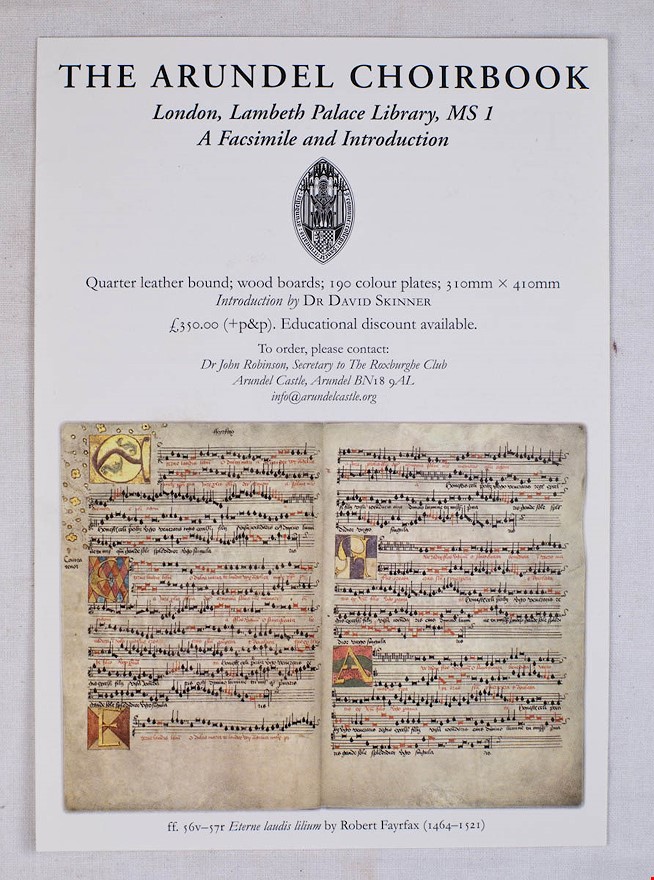The Arundel Choirbook. London, Lambeth Palace Library, MS 1. A Facsimile and Introduction.
SKINNER David introduction (2003)
£350.00
Please contact us in advance if you would like to view this book at our Curzon Street shop.
Folio. Quarter leather bound, wood boards; 190 colour plates (50% of original size); 310 x 410mm. London: Privately printed for the Duke of Norfolk for presentation to the Roxburghe Club,
Due to the size postage and packing will be charged at cost.
A handsome monograph on this spectacular manuscript of medieval church music commissioned by Edward Higgons, Master of Arundel College in Sussex. Three English choirbooks have survived intact from the early Tudour Period: the Eton Choirbook, and the now so-called "Caius" and "Lambeth" Choirbooks (now housed at Gonville and Caius College, Cambridge, and Lambeth Palace Library, respectively). While Eton is known to have originated from the great college of that name the provenance of Caius and Lambeth has, untill now, been a complete mystery. The man responsible for their production has long been held to be Edward Higgons, a prominent Tudor Lawyer and multiple plurist who was a canon of St Stephen's Westminster, where Nicholas Ludford, a principle composer in both manuscripts, was employed from the early 1520s. On the last page of the Caius Choirbook is written the insciption, "Ex dono et opere Edwardi Higons cuius ecclesie canonicis," Which may be translated as, "By the gift and work of Edward Higgons, canon of this church." The "ecclesia" is now believed to be St. Stephen's, although the origins of the Lambeth Choirbook have been much less well understood. It has, however, been generally accepted that it too was produced for one of the ecclesiastical institutions with which Higgons was associated.
In this Roxburghe Club volume, Dr David Skinner (Magdalen College, Oxford) casts new light on the hitherto unknown origins of Edward Higgons, who, after a sucessful legal career in Shropshire and Westminster, retired in 1520 to the mastership of Arundel College in Sussex. In addition, a manuscript roll containing Ludford's music (discovered in the archives of Arundel Castle in 1982) has been found to have been copied by the person who produced Lambeth and Caius , leading to the strong presumption that both books originated from Arundel: Caius as a presentation copy from Higgons, as master of Arundel College, to St.Stephens Westminster, while Lambeth remained at Arundel as A "working" choirbook. A plausible line of descent for the latter book can be traced from Arundel College to Lambeth Palace Library, its final resting place.This is a story of one music manuscript of thousands that must have circulated in late medieval England; it is also a narrative of only one musical institution from the hundreds that were in existence before the onslaught of Henry VIII's Reformation.
The bulk of this Roxburghe Club volume constitutes a full-colour facsimile of London, Lambeth Palace Library, MS ("The Arundel Choirbook"), providing a single but significant resource that richly illustrates England's early musical heritage.Specifications: Introduction of 21,000 words. The digital photography (190 colour plates) was undertaken in the Great Hall of Lambeth Palace by the Digital Image Archive of Medieval Music, using a PhaseOne PowerPhase digital scanning back on a Fuji GXIII Pro medium format body and lens with a maximum svcanning resolution of 49 magapixels. The size of each folio has been reduced to 50% of the original. Each volume is quarter leather bound with wood boards, and the page size is 310mm x 410mm.
Stock Code: 56900




